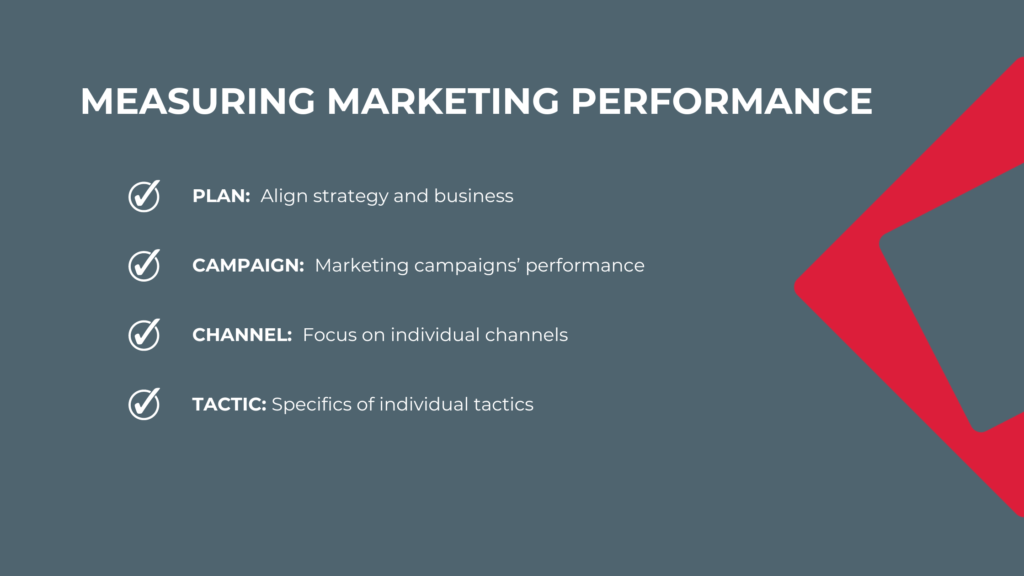With today’s competitive market, tracking marketing ROI is crucial for businesses seeking to justify their marketing spend and optimize their strategies. With the industry moving away from traditional methods like third-party cookies, and with global digital advertising spend projected to surpass $600 billion (U.S. dollars) in the coming years, marketers need to adopt a new, more sophisticated approach to measurement.
In this guide, we’ll dive into how you can craft a marketing measurement plan that not only tracks performance but also aligns with your business’s core objectives.
Image source: Statista
Understanding the Basics of Marketing Measurement Plans
What is a Marketing Measurement Plan?
A marketing measurement plan is a comprehensive framework that guides businesses in identifying, tracking, and analyzing the right data and marketing metrics. It serves as a roadmap for gathering actionable insights from various marketing initiatives, including metrics like website traffic, customer engagement, conversion rates, and ROI. More nuanced data, such as customer satisfaction and brand perception, can also be measured to provide a holistic view of performance.
The effectiveness of this plan lies in establishing KPIs for marketing success that not only align with marketing goals but also reflect broader business objectives. By doing so, businesses move beyond ad-hoc campaigns toward a structured, strategy-driven approach. Measuring these marketing metrics allows for clarity on campaign performance and guides the decision-making process, enabling businesses to adjust tactics swiftly when results fall short. This approach ensures that marketing efforts are not just reactive but proactive, driving long-term growth and success.
Why is a Marketing Measurement Plan Important?
Simply put, it transforms how a business views and uses marketing, shifting from seeing it as a cost center to recognizing it as a revenue generator. This transformation underscores the importance of integrating the marketing measurement plan with the overall business strategy.
This alignment ensures that every marketing initiative and expenditure directly supports your company’s long-term objectives, such as increasing market share, enhancing customer loyalty, or entering new markets.
For a more in-depth view on how to achieve sales and marketing alignment, check out our blog here.
Key Steps of a Marketing Measurement Plan
1. Define Your Business Objectives
Your first step in creating a successful marketing performance measurement plan is aligning your marketing objectives with broader business goals. Whether you’re looking to increase sales, generate leads, or raise brand awareness, each objective will require a different set of marketing metrics to measure success.
2. Identify the Right Metrics
When it comes to measuring your marketing efforts, the phrase “you can’t manage what you don’t measure” holds true. Metrics such as customer acquisition cost (CAC), lifetime value (LTV), and return on ad spend (ROAS) are essential for tracking marketing ROI. Use marketing analytics tools to gather this data and ensure you are tracking the correct metrics for your business needs.
3. Leverage Analytics Tools
There are a wide range of tools for measuring marketing performance and ROI available. From Google Analytics to specialized platforms like HubSpot or SEMrush, using the right tools can make all the difference. These tools not only help in tracking marketing ROI but also provide insights into customer behavior, campaign performance, and more.
4. Refine Your KPIs Regularly
A successful marketing plan isn’t static. As your business grows and evolves, so should your KPIs. Ensure that you’re consistently evaluating whether your chosen KPIs for marketing success are still relevant and are leading to actionable insights.
Creating Your Marketing Measurement Plan: A Step-by-Step Approach
Now that you have an understanding of what a marketing measurement plan is and its key components, let’s delve into how you can build your plan effectively:
1. Setting Clear Objectives and KPIs
- Defining Objectives: Start by establishing clear, measurable goals for your marketing activities. These should align with your broader business objectives.
- Selecting KPIs: Choose Key Performance Indicators that accurately reflect the success of your objectives. This could range from website traffic and conversion rates to customer engagement metrics.
- Begin with a comprehensive data mapping exercise, identifying sources like user interaction metrics, website analytics, and social media engagement.
2. Data Tools and Integration
- Basic Tools: Start with foundational tools like Google Analytics 4 for website traffic and Mixpanel or Amplitude for more detailed user interaction data.
- Integrate data from various platforms such as CRM, website analytics, and email marketing metrics to gain a complete view of customer behaviour.
- Advanced Tools: For deeper insights, use tools like Tableau or Power BI for complex data analysis. Ensure these tools are well-integrated for a unified data strategy.
- Implement automation and management tools like Zapier for streamlining data workflows and platforms like Hootsuite or Buffer for efficient social media management.
Check out our article on how to use Google Analytics 4 here.
3. Collaboration and Data Collection
- Team Collaboration: Encourage regular cross-departmental communication using tools like Slack or Microsoft Teams. For project management, use platforms like Asana or Monday.com.
- First-Party Data Maximization: Use CRM tools like Salesforce or Hubspot for data segmentation and collect data from every customer touchpoint to gain comprehensive insights.
4. Data Analysis and Interpretation
- Analyzing Data: Regularly analyze the collected data to understand customer behavior, campaign effectiveness, and other key metrics.
- Actionable Strategies: Convert these insights into actionable marketing strategies that directly address your objectives.
5. Regular Reporting and Review
- Structured Reporting: Develop a routine for creating reports that measure performance against your KPIs.
- Review Process: Use these reports to inform decision-making processes and strategy adjustments.
6. Action Plan for Optimization
- Implementing Changes: Apply the insights gained from data analysis and reporting to optimize your marketing strategies.
- Monitoring Impact: Continuously monitor the effects of these changes and adjust as necessary to improve outcomes.
7. Technology and Adaptation
- Agility with Technology: Stay adaptable to new technologies that enhance data collection and analysis.
- Measurement Gap Strategies: Use advanced tools to adapt to challenges in tracking and privacy constraints.
- Predictive and Cloud-Based Solutions: Employ cloud-based systems like HubSpot for predictive analytics and integrating large data sets.
8. Data Management and Ethics
- Data Transparency: Maintain clear communication about data usage practices, especially concerning data security and customer privacy.
9. Continuous Improvement and Adaptation
- Ongoing Refinement: Regularly refine your marketing strategies based on data analysis and market trends.
- Adaptability: Be prepared to adapt your strategies in response to changing customer behaviors and market conditions.
10. Predictive Insights with Cloud-Based Solutions
- Consolidate data in cloud-based systems for personalized marketing strategies and quicker insights.
- Analyze large data volumes for predicting trends and customer needs, especially in tech companies.
By following these steps, you’ll be able to create a comprehensive marketing measurement plan that not only tracks and measures performance but also continually adapts and optimizes your marketing efforts for greater success.
Navigating Challenges In Implementing A Marketing Measurement Plan
After outlining the comprehensive steps to create a marketing measurement plan, it’s important to recognize and navigate the challenges that professionals often encounter in the field of marketing measurement. These include obstacles such as complex data attribution across multiple channels, the risk of using misleading data, and aligning marketing goals with broader business objectives.
While a well-structured plan sets the stage for success, addressing these common challenges is crucial for ensuring the effectiveness and efficiency of your marketing strategies.
Here’s how you can address these challenges:
- Multi-Channel Attribution Models: For accurate distribution of credit across various channels. Using linear or time-decay attribution models can distribute credit for conversions more fairly across various channels, helping you understand the full impact of your campaigns. If you’re relying on multiple channels such as email, paid ads, and social media, models like Google Ads’ Attribution Model will help you better distribute credit across these touchpoints.
- Setting SMART Goals: To ensure marketing objectives are clear, aligned, and effective.
- Regular Data Audits: Conduct audits to maintain data accuracy and relevance, including cross-checking sources and identifying discrepancies.
- Investing in Analytics Training: Equip your team to understand and use complex attribution models through training and workshops.
- Enhancing Cross-Departmental Collaboration: Collaborate with departments like sales and customer service to align marketing goals with company objectives.
- Embracing Advanced Analytics Tools: Use sophisticated tools for deeper insights into customer behavior and campaign performance.
- Iterative Testing and Learning: Foster a culture of continuous testing and learning, using insights to refine strategies.
- Transparent Reporting and Communication: Maintain clear communication with stakeholders, providing transparent reports on marketing performance.
After addressing key challenges in marketing measurement, we can now focus on effectively measuring marketing performance. The solutions to these challenges lay the groundwork for a nuanced understanding of marketing effectiveness across different levels.

Effectively Measuring Performance with Your Marketing Measurement Plan
Effective marketing measurement involves analyzing performance at various levels, each providing unique insights:
Plan Level Measurement
- Focus on how the overarching strategy aligns with business objectives.
- Use tools like Google Analytics for assessing website performance. For instance, monitor website traffic in brand awareness campaigns and compare it with industry growth rates.
- Salesforce can be particularly effective in mapping the customer journey from initial contact to purchase.
Campaign Level Measurement
- Zero in on specific marketing campaigns’ performance.
- Tools like HubSpot provide insights for email campaigns, including metrics like open rates, click-through rates, lead conversion rates, and email list growth.
- Google Ads is essential for understanding the cost-efficiency of PPC campaigns, offering insights into the effectiveness of keywords and ad groups.
Channel Level Measurement
- Focus on individual channels like social media or SEO.
- SEMrush or Ahrefs are vital for SEO, enabling marketers to track keyword performance and site rankings.
- Hootsuite or Buffer are key for managing social media, focusing on engagement rates and follower growth, benchmarked against similar brands.
Tactic Level Measurement
- Delve into the specifics of individual tactics within a campaign or channel.
- Hotjar provides insights on website behavior, aiding in understanding user interactions with content.
- Google Analytics tracks user actions like downloads or sign-ups, crucial for optimizing blog posts or social media for higher engagement.
Strategic Alignment and Advanced Techniques
- Ensure all measurement levels support your overarching business goals, aligning marketing plans, campaigns, and tactics with these objectives.
- Use advanced analytical techniques like customer segmentation and lifetime value analysis for deeper insights at each level.
- Integrate offline marketing metrics with online data for a comprehensive view using advanced CRM platforms.
Emerging Technologies and Ethical Considerations
- Embrace emerging technologies like AI and machine learning for more precise and predictive insights.
- Uphold ethical standards in data collection and analysis, prioritizing data privacy and responsible practices.
Customization and Flexibility
- Customize measurement strategies to fit unique business needs, staying adaptable to market changes and evolving customer behaviors.
This approach, combining strategic alignment with advanced analytics, helps in customizing measurement strategies to fit unique business needs while adapting to market changes and customer behaviors.
Conclusion
Crafting a marketing measurement plan is a dynamic process that requires constant evaluation and adaptation.
Ultimately, its effectiveness hinges on its adaptability, the synergy of cross-departmental collaborations, and the ability to evolve with technological advancements. By adopting these practices, businesses can not only measure but significantly amplify their marketing impact, contributing to the broader narrative of business success.
Need help crafting a data-driven strategy that aligns with your goals and boosts your ROI? Get in touch.

